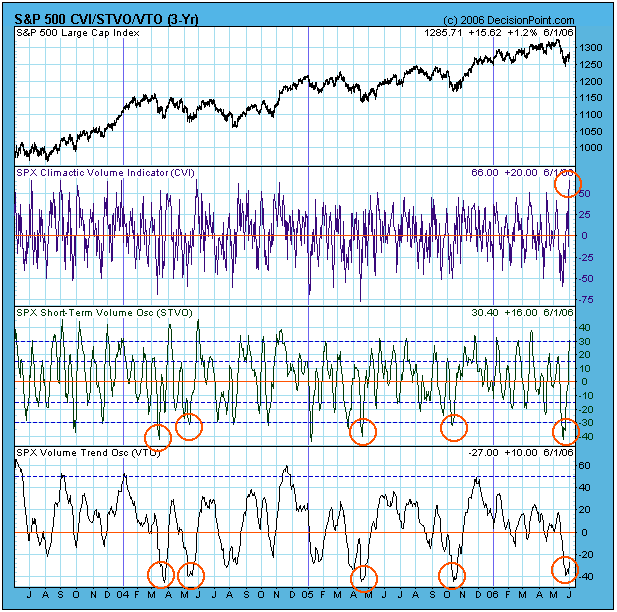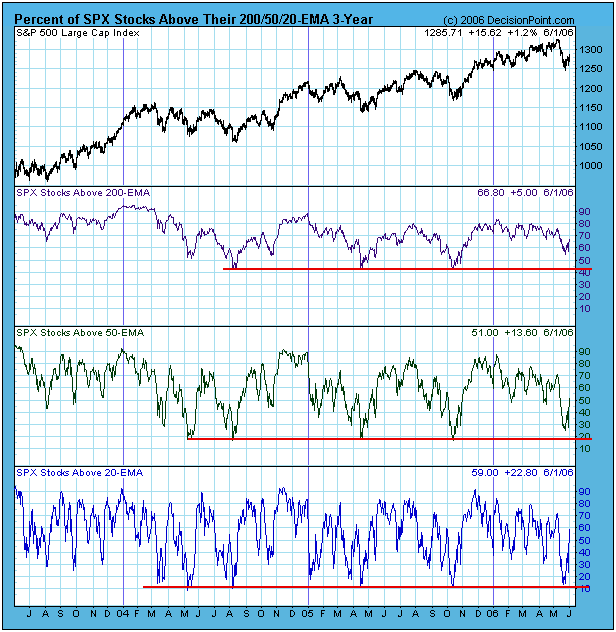Market bottom looks pretty solid, here’s why
On Tuesday we saw the market successfully retest
last week’s lows, then on Thursday there was a climactic rally that broke above
last week’s highs. This was a lot more positive than many people (including me)
were expecting.
The most significant short-term event was that the CVI (Climactic Volume
Indicator), which is the very nervous purple line on our first chart, hit its
highest reading in over a year-and-a-half. This marked what I believe was an
initiation climax (as opposed to an exhaustion climax). As the name implies, an
initiation climax signals that a new short-term trend has been initiated in the
direction of the climax, in this case up. Since the market is now short-term
overbought, some backing and filling can take place before the up trend
continues, but it is most likely that higher prices will be forthcoming.

What makes the recent bottom look pretty solid is that the other two indicators
on the chart, the VTO (Volume Trend Oscillator) and STVO (ST Volume Oscillator),
were very oversold at the recent price lows. I have circled other instances
where both indicators were similarly and simultaneously oversold, and you can
see that rallies of at least short-term duration resulted.
While this rally could challenge the May highs, I don’t think it is the
beginning of a major bull move because of our second chart below, which shows
the percentage of stocks above their 20-, 50-, and 200-EMAs. As you can see, the
shorter-term 20- and 50-EMA indicators reached oversold levels similar to other
important bottoms in the last two years; however, the 200-EMA indicator was only
modestly oversold at the recent price low. The bottom looks pretty solid but
only for short-term purposes.

One thing to remember is that rallies out of oversold conditions are not a
guaranteed sure thing. When the market turns bearish, oversold conditions are
dangerous and can beget even more selling.
Bottom Line: Our primary medium-term timing model for the S&P 500
switched to neutral on May 19, which means that the decline was severe enough to
trigger a caution flag. In order to return the model to a bullish stance, a
modest amount of work will be required to the up side. The condition of the
indicators says that is well within reach; however, I do not think this is the
beginning of a major bull move, because the recent bottom was not deeply
oversold on our long-term indicators.
Carl Swenlin is a self-taught technical analyst, who has been
involved in market analysis since 1981. A pioneer in the creation of online
technical resources, he is president and founder of
DecisionPoint.com, a premier
technical analysis website specializing in stock market indicators, charting,
and focused research reports. Mr. Swenlin is a member of the
Market Technicians Association.
